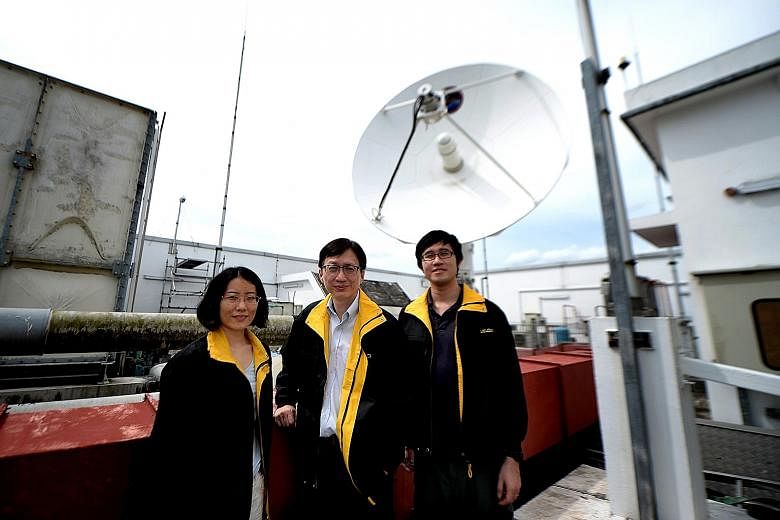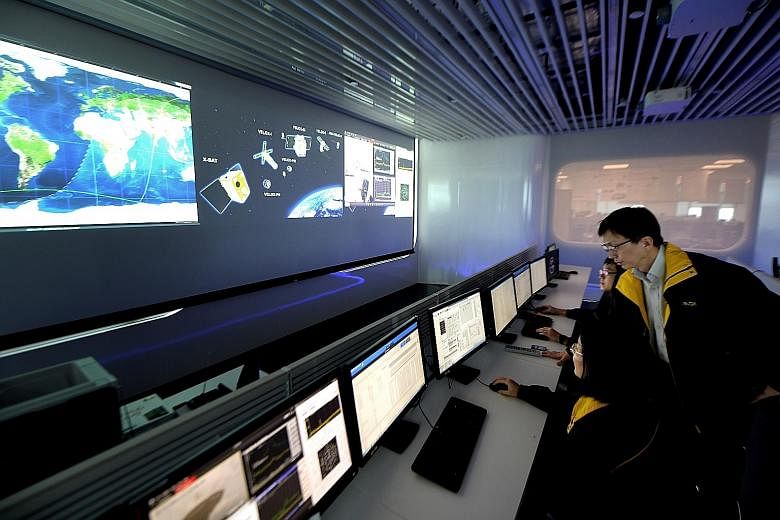Two of the Nanyang Technological University's (NTU) youngest satellites recently had their birthdays in outer space, and their makers have much to celebrate.
Since their launch on Dec 16 last year, both satellites have flown a combined 10,000 times around the Earth and travelled 400 million km. They have also carried out thousands of successful missions, from data collection to satellite verification and testing operations.
Of the two satellites, the 123kg Velox-CI is charged with taking climate measurements - such as atmospheric temperature, humidity and pressure - and evaluating a new, precise navigation system.
This system allows the satellite to determine its orientation to an accuracy of about 0.0003 of a degree by analysing images of the stars around it.
Its petite comrade-in-space, the Velox-II, weighs a mere 12kg. But it is no lightweight.
It is the first of NTU's six satellites to carry a commercial payload and is testing out a new communications technology, developed by home-grown satellite technology developer Addvalue Technologies.
Known as Inter-Satellite Data Relay System, it overcomes a major hurdle in satellite communications systems by allowing the satellite to provide on-demand communication with the ground station even when it is not within range.
One satellite, beyond the line of sight of its station, can maintain communication by relaying the signal via a second one in a higher orbit that is "visible" to both.
If implemented in Low Earth Orbit (LEO) satellites that do environmental monitoring and surveillance, for example, such a system could pave the way for quicker response and aid relief.
"Assuming there is an oil spill in the Strait of Malacca, with (such technology) on a LEO satellite, the operator can task the satellite to take an image on the next pass over the oil spill site," explained Mr Tan Kai Pang, Addvalue's chief operating and technology officer.
It would not have to wait for the satellite to pass over its ground station, which could take hours.
"In the same vein, more real-time reaction can be made on the ground to combat the haze problem that has been plaguing our region for years," Mr Tan added.
On the successful completion of the satellites' key missions, Mr Lim Wee Seng, executive director of the NTU Satellite Research Centre, said: "These completed space experiments have further enhanced the university's satellite building capabilities, making its next generation of nanosatellites more advanced and reliable, (having capabilities) such as a highly precise location and navigation system, as well as on-demand satellite communication."
Going forward, Addvalue's Mr Tan said its immediate objective would be to build cost-effective, small and power-efficient terminals that can survive long-term LEO satellite missions in space.
Velox-CI is designed to last three years, while Velox-II will last about a year, although satellites normally operate longer than what they are designed for. Mr Tan said: "Hopefully, such terminal technologies may find some relevance in outer space exploration."
The Singapore Government has said the space and satellite sector is one of the new industry clusters that it will focus on growing.
The global space industry stood at US$323 billion (S$467 billion) last year, according to the Space Foundation Report.
In Singapore, there are now about 40 space-related companies, including local and locally-based foreign types, said Singapore Space and Technology Association president Jonathan Hung. He added: "(The industry) has grown about 30 per cent over the past decade. There has been an increase in local SMEs (small and medium-sized enterprises) with adjacent capabilities joining the fray and supporting satellite developments.
"This pool is important as they give confidence to more established international space players that Singapore can support their technical needs."



